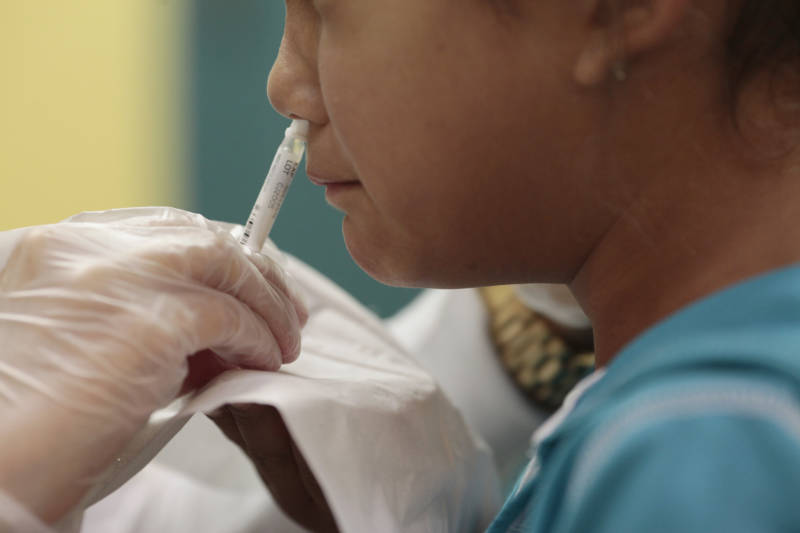The CDC usually adopts the committee's recommendations.
NPR reports that scientists aren't really sure why the nasal spray is no longer working:
"The company [that manufactures FluMist], the FDA, and other investigators still haven't been able to put their scientific finger on the exact reason, but there are several studies that have indicated that in the United States the vaccine has underperformed in a very substantial way," said Dr. William Schaffner, an infectious disease specialist at the Vanderbilt University School of Medicine and longtime member of the Influenza Vaccine Working Group.
Schaffner did note, however, that the spray began performing poorly when all flu vaccines were adjusted to protect against four influenza strains instead of three.
Meanwhile, AstraZeneca, the maker of FluMist, said in a statement that it "is working with the CDC to better understand its data to help ensure eligible patients continue to receive the vaccine in future seasons in the U.S."
Early studies, including randomized trials coordinated by the manufacturer, showed FluMist was highly effective, and in children performed better than traditional flu shots.
The numbers looked so good that in 2014 the committee made the unusual decision to advise doctors that FluMist was better at preventing flu in healthy kids ages 2 through 8.
But since then, studies have shown the vaccine didn't work well against the most common flu strains in any of the past three flu seasons. All flu vaccines performed poorly two winters ago, but data show FluMist performed poorly the two other seasons as well.
During the winter that just ended, flu shots were nearly 50 percent effective against the flu strain that made most people sick. But FluMist didn't work at all, CDC researchers said, citing preliminary results from a study of about 2,300 U.S. children.
Dr. Joseph Bresee, a flu expert at the CDC said there's no evidence of an increase in flu deaths among kids who had the FluMist.
CDC recommends that everyone over age six months receives a flu vaccine every year.
The Associated Press contributed to this report.

